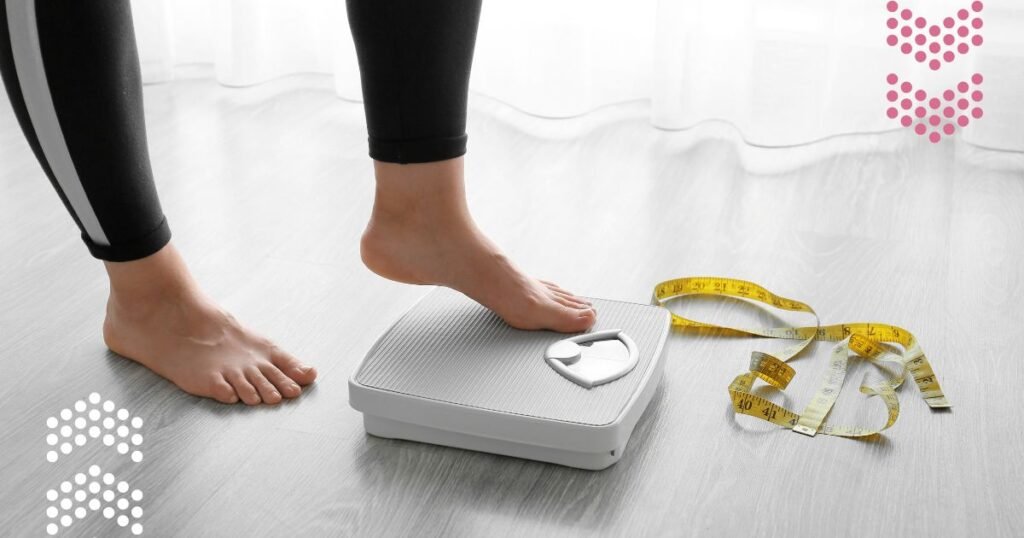The Role of Age in Women: Why Metabolism Slows with Aging
Understanding Metabolism and Its Role in Weight Management
Metabolism is the process by which the body converts food into energy. It consists of multiple complex biochemical reactions that support essential functions such as breathing, digestion, and circulation. One key aspect of metabolism is how the body burns calories to support energy needs. Women, in particular, may experience unique metabolic challenges due to hormonal fluctuations and the natural aging process.
Two crucial aspects of metabolism are Basal Metabolic Rate (BMR) and Resting Metabolic Rate (RMR). BMR refers to the number of calories your body burns at rest to perform essential life-sustaining functions such as breathing and circulation. RMR, on the other hand, is similar but takes into account energy expended on additional activities like digestion and simple movements.
In women, metabolism plays a central role in maintaining a healthy weight. While a fast metabolism helps in burning calories efficiently, a slower metabolism makes it harder to avoid weight gain. As women age, a natural slowdown in metabolic processes begins, which can be further influenced by factors like hormone changes, decreased muscle mass, and lifestyle choices. Addressing these factors proactively can help women maintain a healthier weight and metabolic function throughout their lives.
How Metabolism Changes with Age
Childhood to Early Adulthood
In childhood and early adulthood, metabolism operates at its peak. This period is characterized by rapid growth and development, which naturally leads to a higher demand for energy. The body requires more calories to support its essential functions and muscle-building processes, making weight management relatively easier for many women during this stage of life. Additionally, the metabolic rate is supported by a naturally higher percentage of lean muscle mass.
During these formative years, it’s easier for women to manage their weight, especially with regular physical activity. However, these youthful metabolic benefits are temporary, and as women transition into adulthood, metabolism begins to slow down.
The Post-30 Decline
Once a woman enters her 30s, metabolism tends to slow down. Research suggests that metabolic rates decline by 2-3% per decade after this point. The primary driver behind this metabolic slowdown is the gradual loss of muscle mass, also known as sarcopenia. Since muscle burns more calories than fat, losing muscle results in fewer calories burned, even at rest.
This period of metabolic decline is often exacerbated by lifestyle factors such as reduced physical activity, hormonal changes, and a decrease in energy expenditure. Without intervention, these factors can lead to weight gain and difficulty in maintaining a healthy weight. It’s important for women to recognize that maintaining an active lifestyle, including strength training, is essential for preserving muscle mass and sustaining a healthy metabolism as they age.
Post-Menopause Metabolic Shifts
As women enter menopause, significant hormonal changes, particularly the decline in estrogen, further impact metabolism. Estrogen plays a crucial role in regulating body fat distribution and maintaining metabolic efficiency. Its decline can lead to increased fat accumulation, particularly in the abdominal area, and can make it more challenging to maintain or lose weight.
Additionally, the loss of estrogen may contribute to further muscle loss, compounding the natural metabolic slowdown already experienced with aging. As a result, post-menopausal women may notice that even with the same diet and exercise habits, they gain weight more easily than before. Addressing these shifts through a combination of strength training, diet adjustments, and possibly medical interventions can help manage post-menopausal metabolic changes.
Factors Contributing to Metabolic Slowdown in Women
Loss of Muscle Mass (Sarcopenia)
The gradual loss of muscle mass with age is a significant contributor to metabolic decline in women. As muscles are more metabolically active than fat, a decrease in muscle tissue naturally reduces the number of calories burned at rest. This condition, known as sarcopenia, becomes more pronounced in women starting in their 30s and accelerates with age.
By the time women reach their 40s and 50s, the combined effects of muscle loss and reduced physical activity can dramatically slow down metabolism. This makes it increasingly difficult to maintain a healthy weight without dietary adjustments and physical activity. Fortunately, resistance and strength training can help preserve muscle mass and boost metabolism. Engaging in regular strength exercises, such as weight lifting or resistance band workouts, can help counteract the effects of sarcopenia and maintain muscle mass.
Hormonal Changes
Hormones play a central role in regulating metabolic processes. For women, hormonal fluctuations—particularly those related to estrogen—significantly influence metabolic efficiency. Estrogen helps regulate fat storage and energy expenditure, and as levels drop during menopause, women often experience an increase in fat storage, especially around the abdominal region. This fat accumulation is not only a cosmetic concern but can also lead to increased health risks such as heart disease and diabetes.
The thyroid gland, which regulates metabolism, can also be affected by aging and hormonal changes. Hypothyroidism, or an underactive thyroid, becomes more common with age, and its symptoms include weight gain, fatigue, and slow metabolism. Women should consider monitoring their thyroid health as part of their overall metabolic care, especially as they age.
For more information on how hormones affect weight and metabolism, visit this guide on women’s health and weight loss.
Reduced Physical Activity
Many women experience a decline in physical activity as they age. This can be due to a variety of reasons, including increased professional responsibilities, family obligations, or simply a lack of motivation. However, a sedentary lifestyle can lead to a further decrease in muscle mass and a corresponding reduction in metabolic rate. Staying active is essential for preserving both muscle mass and overall metabolic health.
Maintaining a routine that includes both aerobic and strength-training exercises can help counteract the effects of aging on metabolism. While it’s common to focus on cardio for weight loss, resistance training is equally important for preserving muscle mass and keeping your metabolism efficient.
Genetics and Individual Variability
While lifestyle factors have a significant impact on metabolism, genetics also play a role in determining metabolic rate. Some women may naturally have a faster or slower metabolism based on their genetic makeup. Although genetic predisposition cannot be changed, lifestyle choices like diet and exercise have a more substantial influence on metabolism.
It’s important to understand that while genetics may influence metabolic function, it is often the combination of genetics and environmental factors that determine metabolic health. Regular physical activity and a well-balanced diet can help mitigate the effects of genetic predispositions and slow metabolic decline.
The Impact of Lifestyle Choices on Aging Metabolism
Diet and Nutrition
One of the most significant factors influencing metabolism as you age is your diet. Consuming a balanced diet rich in lean proteins, healthy fats, and complex carbohydrates can help maintain energy levels and metabolic health. Protein, in particular, is essential for preserving muscle mass and promoting a higher metabolic rate.
A diet high in processed foods and refined sugars can have the opposite effect, slowing metabolism and leading to weight gain. Eating smaller, more frequent meals throughout the day can also help keep your metabolism active. For more tips on managing your diet for optimal metabolic health, check out this resource on diet and weight loss.
Exercise and Strength Training
Exercise, especially strength training, is crucial for maintaining muscle mass and keeping metabolism active as you age. Even if you don’t enjoy lifting weights, activities like yoga, Pilates, and resistance band exercises can help maintain muscle tone and support a healthy metabolism. Regular physical activity, whether it’s walking, swimming, or dancing, can keep your metabolism functioning at a higher rate.
Strength training at least 2-3 times per week can have a significant impact on preventing muscle loss and supporting metabolism. Including exercises that target large muscle groups, such as squats and lunges, can maximize the benefits of your workout routine.
Sleep and Stress Management
Sleep is often overlooked when it comes to metabolic health, but it plays a crucial role in regulating hormones that control appetite and energy use. Lack of sleep can disrupt the balance of ghrelin and leptin, two hormones that control hunger and fullness, leading to increased calorie consumption and weight gain.
Chronic stress also impacts metabolism by increasing cortisol levels, which can lead to fat accumulation, particularly around the abdomen. Managing stress through techniques like meditation, deep breathing exercises, and yoga can improve metabolic health and overall well-being.
How to Boost Metabolism as You Age
Strength Training and Muscle Preservation
Strength training is one of the most effective ways to preserve muscle mass and keep your metabolism active. Exercises that target large muscle groups, such as squats, deadlifts, and lunges, can help maintain and build muscle mass, even as you age. By keeping your muscles strong, you help your body burn more calories at rest, which can prevent weight gain and slow the metabolic decline associated with aging.
Even simple exercises like bodyweight squats or push-ups can make a difference. Resistance bands and free weights are also excellent tools to incorporate into your workout routine for muscle preservation.
Nutritional Adjustments
As women age, dietary adjustments become essential to support a healthy metabolism. Eating a diet rich in protein helps preserve muscle mass, which in turn supports a faster metabolic rate. Lean proteins like chicken, fish, and plant-based sources can be included in every meal to maintain energy levels and metabolic efficiency.
Reducing processed carbohydrates and sugary snacks is also vital for preventing metabolic slowdown. Focusing on whole foods, including fruits, vegetables, whole grains, and healthy fats, can help optimize your diet for a healthy metabolism.
Staying Active
Physical activity is one of the most important factors in maintaining a healthy metabolism as you age. Even small bursts of activity throughout the day, such as taking the stairs or going for a walk, can have a significant impact on metabolism. Regular aerobic exercises like walking, jogging, and swimming can help keep your metabolism active.
Preventing Weight Gain After 35: Practical Strategies
Creating Sustainable Habits
Rather than focusing on quick-fix diets, it’s essential to create sustainable habits that promote long-term health. Meal planning, portion control, and mindful eating can all help in maintaining a healthy weight and metabolism. It’s important to focus on whole, nutrient-dense foods that support muscle preservation and energy levels.
Incorporating Strength and Resistance Training
Strength and resistance training are critical for preserving muscle mass and keeping metabolism active as you age. Try incorporating resistance exercises into your routine at least 2-3 times per week. Focus on exercises that target large muscle groups to get the most metabolic benefit.
Mindful Eating and Portion Control
Mindful eating involves paying attention to your hunger and fullness cues, which can help prevent overeating. Portion control is also critical in maintaining a healthy weight and metabolism. Focus on smaller, more frequent meals that provide a balance of protein, healthy fats, and fiber to keep your metabolism active throughout the day.
Conclusion
Aging brings inevitable changes to metabolism, but understanding the factors at play can help women take control of their health. By focusing on muscle preservation through strength training, maintaining a balanced diet rich in protein, and staying active, women can combat metabolic slowdown and prevent unwanted weight gain.
If you’d like to learn more about the factors affecting women’s metabolism and how you can maintain a healthy metabolic rate as you age, browse our website for additional resources, including workout plans, nutritional advice, and weight management calculators tailored specifically for women.


